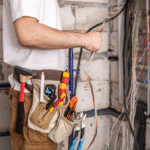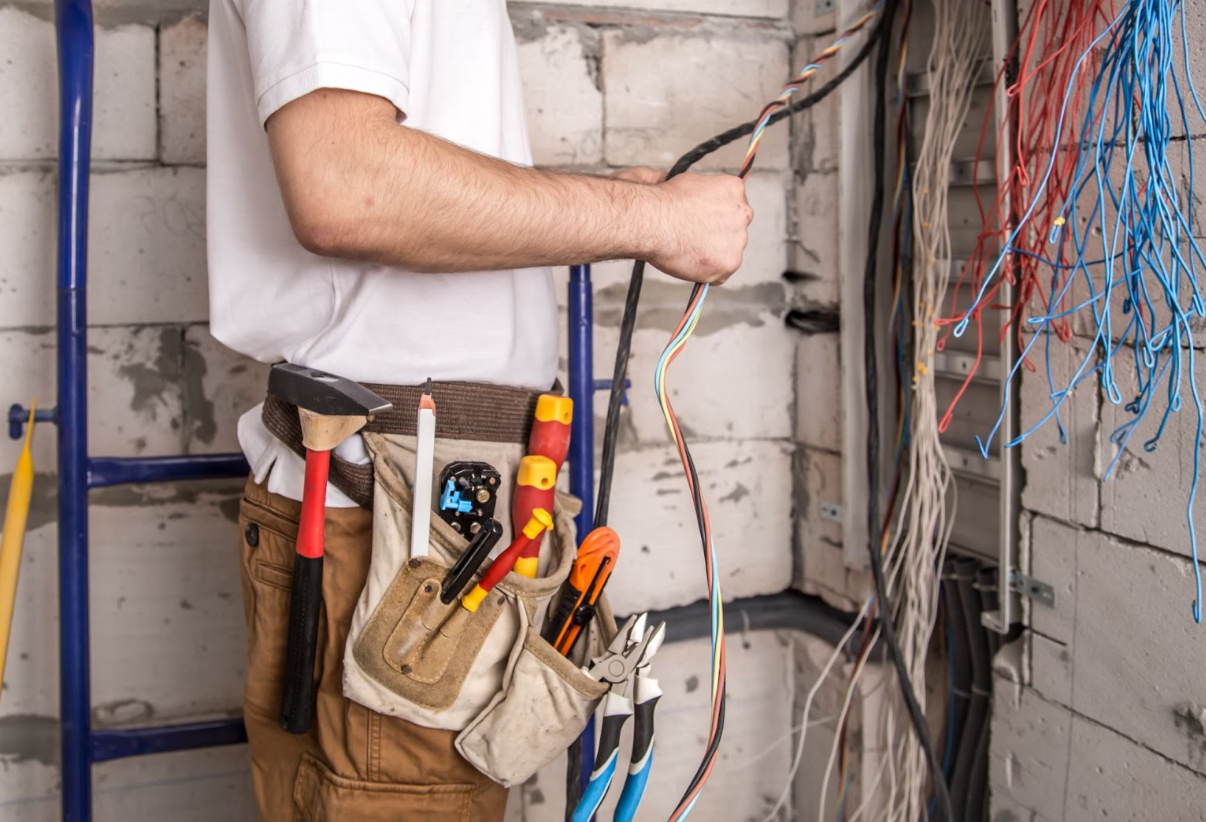Of all materials used for modern manufacturing, brass stands out for its functional, aesthetic, and machinability value. Due to the ever increasing requirements for precision, brass components are widely used from electronics, telecommunications, and aerospace engineering to luxury hardware. CNC brass parts have become more popular due to their strength and visual appeal, supporting their use of CNC applications.
Durable components are always useful, but their precision in design is what makes them intricate. For precision parts manufacturers, the need for durability comes with the need for detail, which can be achieved through CNC brass machining. This article will explain the underlying processes that make advanced machining capture the aesthetic value in intricate details of high-end manufacturing and the underlying reasons why CNC brass components are highly regarded.
Why Precision Machining Adopts Brass
Brass is one the most used alloys made of copper and zinc due to its excellent machinability and robustness against corrosion. In comparison to other metals, brass maintains its form and performance over long periods of time. Its non-magnetic properties, appealing golden finish, and resistance to corrosion make brass a prime candidate for precision machining applications.
Reasons why industries utilize brass are:
- Easily machined and cost effective: Compared to lots of other metal alloys, brass features excellent machinability. The feed and speed of machining operations can be higher without increasing tool wear or machining time, enabling easier chip removal.
- Green brass properties: Especially in marine and plumbing applications, as well as in outdoor settings.
- Permanently positioned in electrical works: Gives brass its forum applications like on terminals, connectors, and in the manufacturing electrical hardware.
- Desirable surface finish: Brasses visual appeal without further processing makes it a suitable option for luxury and decorative components.
- Non-sparking characteristics: Make brass safe for use in explosive or flammable environments.
With the above mentioned characteristics, it is no wonder that CNC brass parts are specified in more and more projects requiring precision, durability, and beauty.
CNC Machining Techniques for Advanced Brass Parts With Tailored Details
There are numerous ways brass can be machined using CNC, which enhances its applicability in custom and high-performance design. Component detailing and detailing can now be matched by modern machine shops to be more custom tailored to a client’s needs.
CNC Turning Capabilities
Turning is not limited to threaded components, it also covers bushings and fittings. The manufacture of bushing and cylindrical parts involves extensive turning. CNC lathes afford control over external and internal diameters, circular grooves, taper angles, among stub ends and brass sleeves.### CNC Milling
It’s possible to use milling for flat surfaces, pockets, and profile intricacies. Moreover, complex geometries that would be hard to accomplish through traditional techniques can be achieved with multi-face CNC mills that have the ability to work on multiple faces of a part.
Drilling and Tapping
Brass’s softness makes it the easiest type of material to work with when it comes to components that need internal or external threads. The ease of drilling and tapping means that brass is often used. Tapped holes in general, are able to withstand a considerable amount of mechanical stress, making them favorable for use in mechanical assemblies.
Micro Machining
The components used in horology and electronics are so small that CNC micro-milling of brass helps create features that are better than anything else available and can reach the tolerance of microns.
Surface Finishing
Brass has an appealing look by itself but as with most materials, secondary processes such as polishing, passivation, and brushing tend to improve the surface texture in relation to the intended end-use requirement, which adds to its attractiveness.
Specialized features and aesthetic refinement on precision parts enable manufacturers to utilize these methods for functional and ornamental uses of CNC brass parts.
Industries where CNC Brass Parts are Essential
The versatility of CNC brass parts is admired and expanding across industries due to the materials mechanical properties alongside its aesthetic appeal. Let’s delve into some of the key industries where these components are crucial.
Electrical and Electronic Engineering
Due to brass’s conductivity and durability, it is also seen in terminals, connectors, and even sockets and switches CNC machining makes sure that these components have the exact measurement which helps with uniformity as well as safety.
Fluid Control and Plumbing
Brass is very important in valves and fittings because of its corrosion resistance and the maintenance of pressure tolerance. The CNC machines make sure that the threads and seals are machined in a way that prevents leakage.
Aerospace and automotive
Decorative brasso trim, pressure bearing brass fittings, and temperature sensors all add to the functionality for vehicles and aircraft. Safety critical industries rely on CNC machining to get the precision in measurement that is essential to dealing with reliability.
Consumer Goods and Luxury
Wrist watches, custom jewelry design, custom hardware and eyewear all rely on brass to enhance appeal. Enhancing a product value becomes possible thanks to CNC engraving and milling which create custom detailing.
Industrial and Robotics
Brass ‘s strength and machining capabilities assists in the production of precision bushings, fasteners, and screws. These pieces often require complex geometric shapes and precise measurements, which can be simplified to CNC processes due to their intricacy.
The reason cnc brass parts and precision parts manufacturers develop new products in unforeseen ways serves to explain why they are gaining recognition in this ever evolving market.
The Role of Precision Parts Manufacturers in Brass Component Quality
Selecting the material does not complete the task of producing quality CNC brass parts. Their capabilities which include engineering work, the type and quality of tools used and the caliber of the systems employed all precision parts manufacturers’ guarantee greatly influence the outcome.
The most critical aspects when considering a manufacturing partner are:
- Machining accuracy: Does the shop possess the capability to achieve tolerances of ±0.005 mm or better?
- Tooling and fixturing: Is the shop applying modern aids and multi-axis jigs to reduce part handling and the risk posed by human interaction?
- Material traceability: Are they able to supply certifications and batch records that ensure compliance and consistency?
- Surface finish control: Are polishing and finishing processes received into the workflow?
- Quality inspection systems: Do they use CMM, laser scanning, or vision systems to check the accuracy of the parts?
- Flexibility for prototyping and production: Is the shopcapable of undertaking low-volume prototyping as well as high-volume production?
Engaging with skilled precision parts manufacturers ensure that your brass parts are not just fitted to specifications but also checked against several industry standards of safety, reliability, and durability.
CNC Brass Machining: Further Anticipated Developments
The technology used in machining brass components continues to grow and is projected to do so for the foreseeable future. Some of the developments expected in this market include:
- Sustainability in metal sourcing: There are expected to be more greener and recycled brass alloys used.
- Miniaturization: More and more medical sensors, wearables, and IoT devices will result in an increased demand for tiny brass components and parts.
- Smart machining: The incorporation of artificial intelligence to CNC systems improves efficiency by optimizing tool paths and predicting wear.
- Hybrid manufacturing: Adding 3D printing (additive) to CNC (subtractive) techniques for complex part fabrication.
- Digital supply chains: Software applications operating in the cloud improve quoting, tracking, and quality assurance by providing real-time access, enhancing visibility and speed.
Fulfilling these trends will enable manufacturers to provide more value to their clients by offering smarter, faster, and more sustainable CNC brass parts production.
Conclusion
CNC brass parts embody incredible strength, workability, and beauty. These components, which range from electrical terminals to luxury fixtures, showcase modern precision engineering. Businesses who seek to design and produce elegantly crafted functional products will find that brass is an excellent choice.
Every detail, including thread alignment and surface texture, is crafted to precision when partnering with trusted precision parts manufacturers. There is an expectation for precision, and any demand necessitates accuracy, beauty, and reliability—qualities found in CNC machined brass for various industries.




